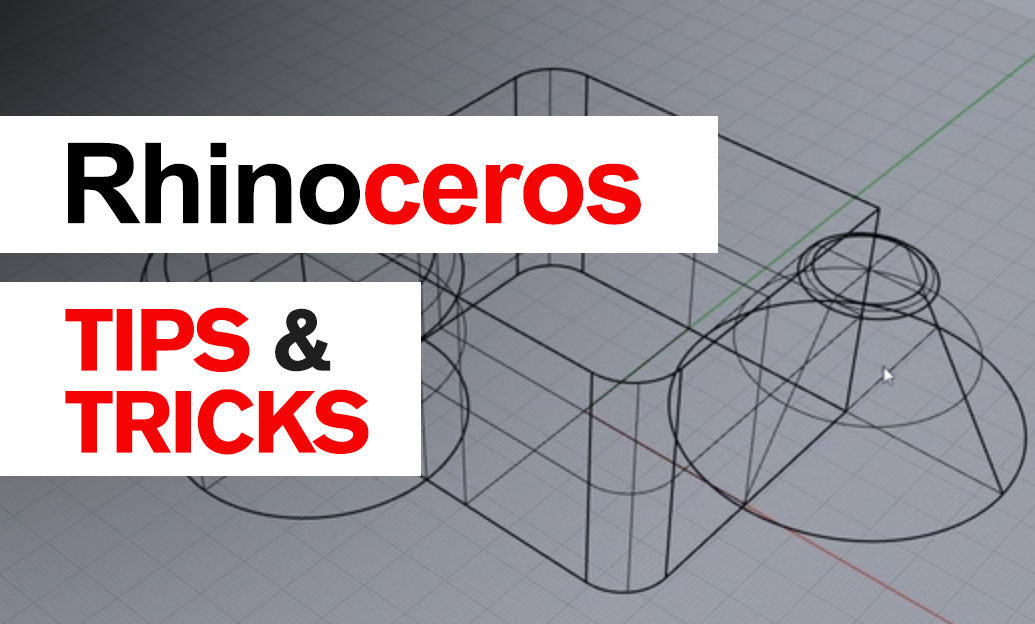Your Cart is Empty
Customer Testimonials
-
"Great customer service. The folks at Novedge were super helpful in navigating a somewhat complicated order including software upgrades and serial numbers in various stages of inactivity. They were friendly and helpful throughout the process.."
Ruben Ruckmark
"Quick & very helpful. We have been using Novedge for years and are very happy with their quick service when we need to make a purchase and excellent support resolving any issues."
Will Woodson
"Scott is the best. He reminds me about subscriptions dates, guides me in the correct direction for updates. He always responds promptly to me. He is literally the reason I continue to work with Novedge and will do so in the future."
Edward Mchugh
"Calvin Lok is “the man”. After my purchase of Sketchup 2021, he called me and provided step-by-step instructions to ease me through difficulties I was having with the setup of my new software."
Mike Borzage
Rhino 3D Tip: Maximizing Model Detail and Control with the Explode Command in Rhino 3D
May 01, 2025 2 min read

In Rhino 3D, the Explode command is a powerful tool for breaking down complex geometry into simpler components, allowing for detailed modifications and precise control over your models. By mastering the use of the Explode command, you can enhance your workflow and achieve a higher level of detail in your designs.
Here's how to effectively utilize the Explode command for detailed modeling:
- Understanding the Explode Command: The Explode command separates composite objects into their individual parts. This is particularly useful when working with polylines, polysurfaces, meshes, and blocks that need individual component editing.
-
Exploding Polysurfaces: When you explode a polysurface, it breaks down into separate surfaces. This allows you to:
- Modify individual surfaces without affecting the entire polysurface.
- Analyze and correct surface normals for proper shading and rendering.
- Reconstruct or rebuild surfaces for smooth transitions.
-
Working with Blocks: Exploding blocks converts them into their constituent geometry, enabling edits to objects that were previously locked within a block definition. Keep in mind:
- Exploded blocks lose their block instance properties.
- Consider using BlockEdit for non-destructive editing if you intend to preserve block relationships.
-
Editing Meshes: Exploding a mesh object divides it into its mesh faces, which can be beneficial for:
- Isolating specific areas for refinement or smoothing.
- Deleting unwanted mesh faces to create openings or vents.
- Converting select mesh faces back into NURBS surfaces for advanced editing.
-
Optimizing Curves: Exploding polylines or composite curves separates them into individual line or curve segments. This is useful for:
- Adjusting specific segments without altering the entire curve.
- Simplifying complex curves for CNC machining or laser cutting.
- Cleaning up imported geometry that may have overlapping or duplicate segments.
-
Best Practices:
- Duplicate Before Exploding: Make a copy of your original object before exploding, so you can revert back if necessary.
- Layer Management: Organize exploded components on separate layers for better visibility and control.
- Grouping Elements: After exploding, group related components using the Group command to maintain organization.
- Use with Caution: Exploding complex models can increase file size and complexity. Only explode what is necessary to edit.
-
Reassembling Components: After making the necessary edits to individual components, you can rejoin them using commands like Join, Boolean Union, or MergeSrf for surfaces. This helps in:
- Maintaining model integrity.
- Ensuring continuity and smoothness between surfaces.
- Preparing the model for rendering or manufacturing.
By effectively using the Explode command, you unlock the ability to manipulate every aspect of your model, leading to more detailed and precise designs. Remember to manage your layers and groups to keep your workflow organized and efficient.
For more tips on maximizing your Rhino 3D capabilities, visit NOVEDGE, the leading online store for design software. NOVEDGE offers a wide range of resources and expert support to help you elevate your design projects.
You can find all the Rhino products on the NOVEDGE web site at this page.
Also in Design News

Harnessing Distributed Ledger Technology for Secure and Transparent Design Collaboration
May 06, 2025 11 min read
Read MoreSubscribe
Sign up to get the latest on sales, new releases and more …




